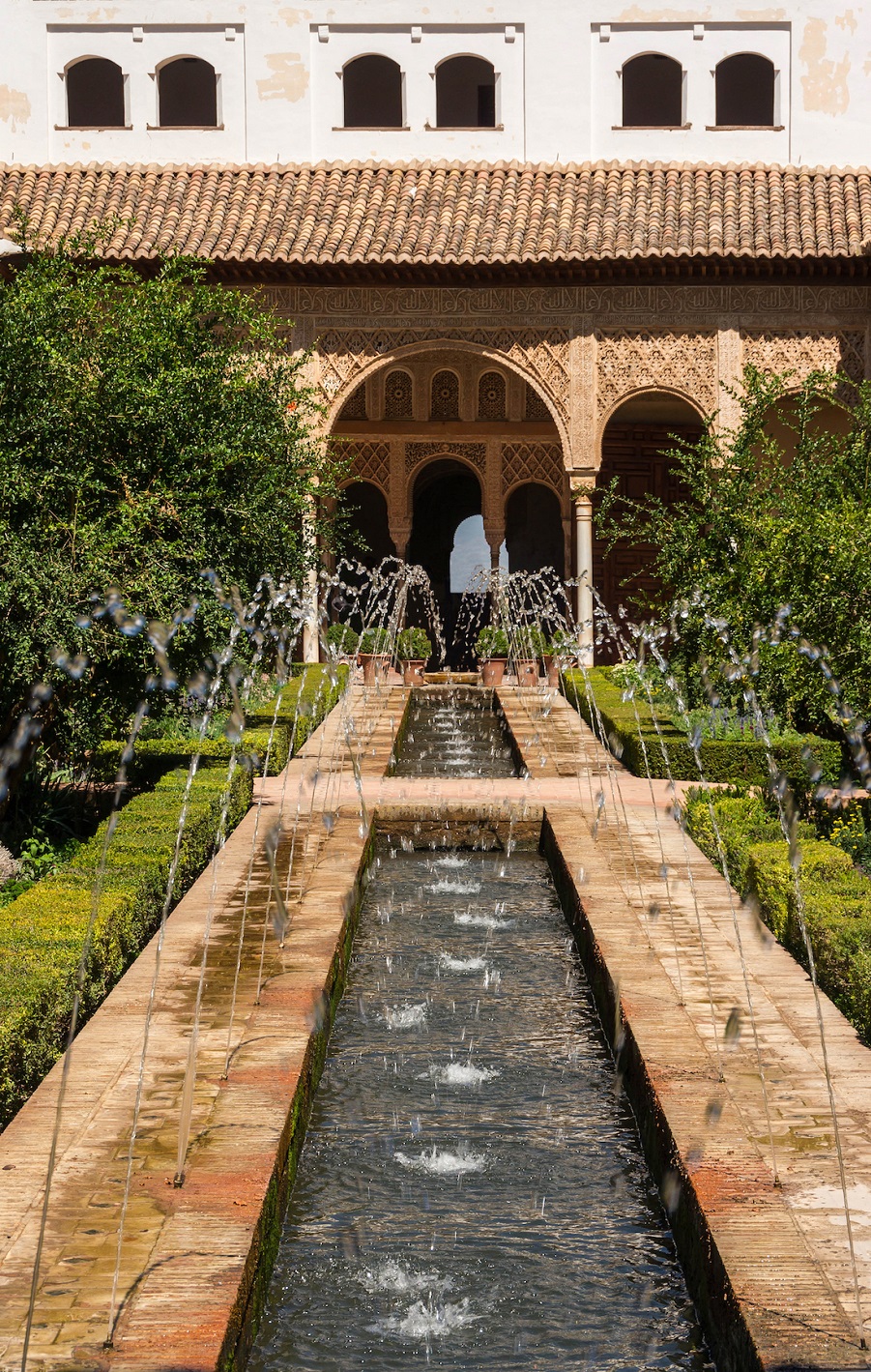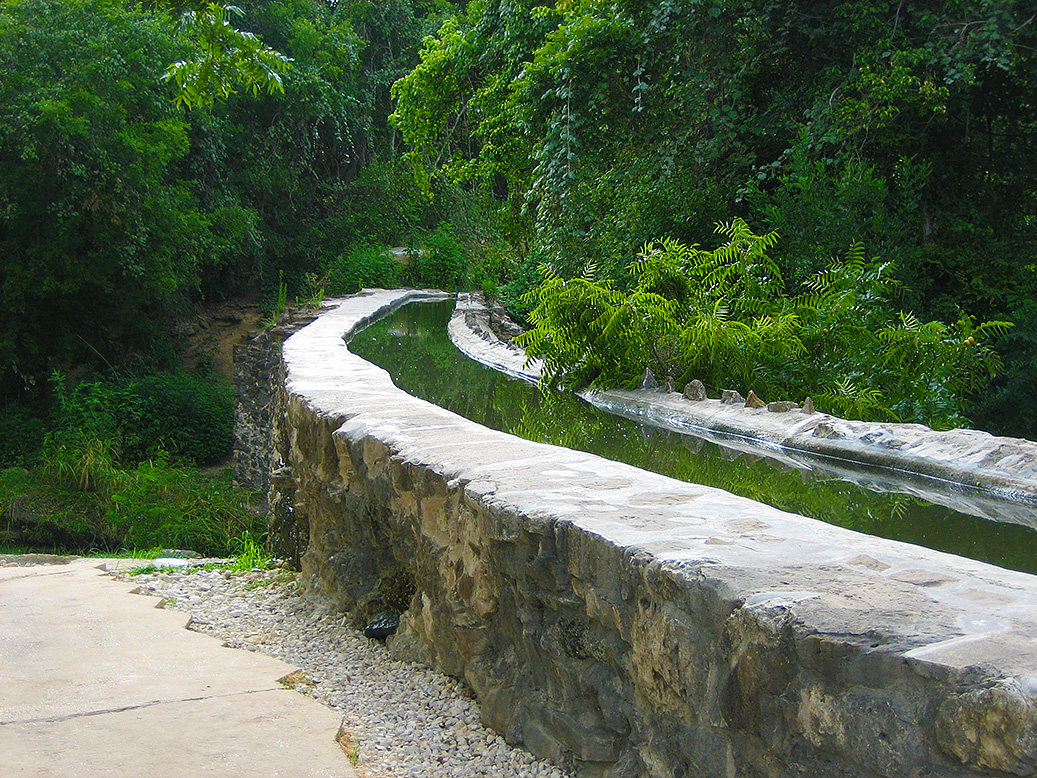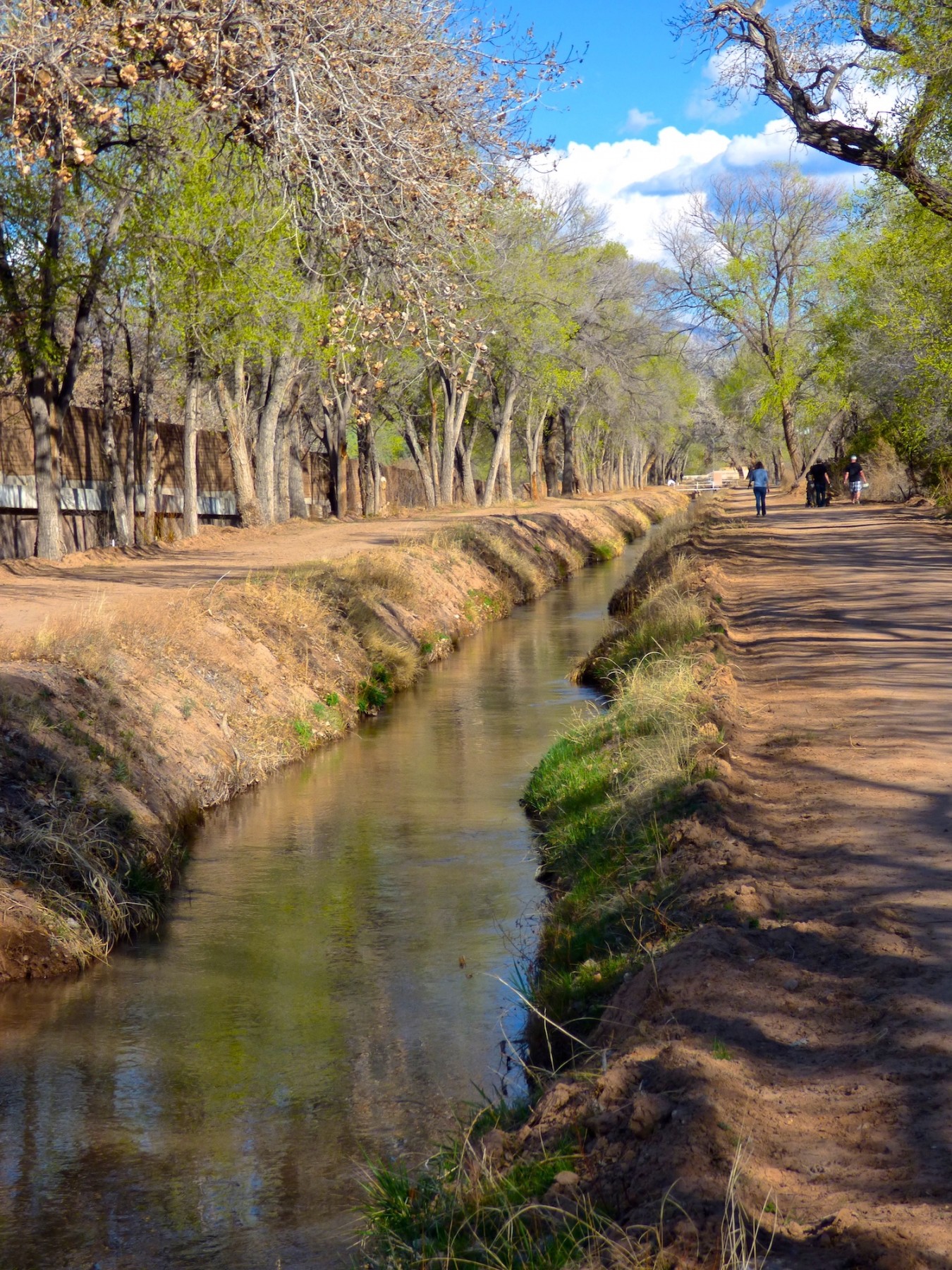High elevations and low waterfall mean gardening in the southwest depends a lot on what you might call “mechanical intervention”; glasshouses and tunnels for season extension and irrigation to compensate for shortages are the chief tools at the gardener’s disposal.

Developed by the ancient Romans, adapted by the Moors in pre-Christian Spain, aqueducts fed water courses known as acequias to irrigate farm fields and enhance regal gardens like those at the Generalife. Brought to North America by Spanish settlers, some of the most extensive acequia networks are found today in Albuquerque and in San Antonio, Texas, where sections form part of the San Antonio River Walk. Yet despite the fact that some have become tourist draws, those that have been neglected over the years are being restored and managed in the traditional manner, becoming an important ally in maintaining small farms that support local food supplies, as well as being incorporated into public projects in the increasingly urbanized landscapes of the arid southwest.

An acequia is maintained in a democratic manner by the farmers whose fields depend upon it for irrigation, taking mutual responsibility for its upkeep and dispensing the water in an equitable manner. But in the modern West, “water right” laws centered on “prior appropriation”—a complicated notion of who gets water first and how much—has turned this natural resource into a bargainable commodity, benefiting large-scale agricultural operations but disenfranchising many small family ranches and farms, especially ones in Colorado and New Mexico. As climate change alters weather patterns and monsoons and snowpack dwindle, so does the water available to those downstream from the first user, or those who depend on the ever-depleting aquifers, which throughout the West are at record lows. It was reported on 9 January this year that snow depths in southwestern Colorado are at 22 percent of normal, the upper Colorado River Basin at 65 percent of normal and the Arkansas River Basin at 49 percent of normal. These are the lowest levels recorded in 30 years.

In Albuquerque, Hunter Ten Broeck, designer and President of WaterWise Landscapes Inc., has, since 1993, been involved in the annual Land and Water Summit organized by the Xeriscape Council and Arid LID (Low Impact Development), being held this year on 22-23 February in Albuquerque. Says Hunter, “over the years our focus has evolved from educating and promoting xeriscape to understanding and implementing watershed conservation, and expanding our audience to include planners and engineers to complement the horticultural and landscape professionals who were our main audience in the early years.”

In this manner the summit now addresses a broader range of the issues — ones that we all face. Water is life, and the southwest desert regions seem to be the most impacted by faltering weather patterns, so new approaches to landscape must be evolved. “We have,” says Hunter, “to learn how to replant to a new paradigm, to new climate zones, to utilize shade more effectively, to find durable, permeable alternates to hard surfaces and other heat sinks, and in the meantime, develop ways to use rainwater runoff more effectively.” The techniques being embraced are ones that previous generations of farmers and gardeners understood and practiced; creating swales to channel and direct rainfall; using pumice stone rather than concrete pipe to build French drains. And to restore and enlarge acequias while reinstating the age-old community management of water so that everyone shares in the life-giving resource. As Professor José Rivera notes, “…connections with a geographic locale are an integral part of individual as well as collective identity. Everyone is “from a place.” When two persons introduce themselves, invariably the next question of mutual interest is: “De donde eres?” (“Where are you from?”)” And the reply frequently referred to the person’s nearest acequia.
Acequias are, in effect, slow landscape at work; the idea of returning to earlier, traditional ways of living and being and of managing our lives and environments in such a way that we are attune to nature’s rhythms, rather than trying to orchestrate them to our demands. In the process, our gardens and public spaces remain life-preserving reservoirs of personal expression, of beauty and refreshment, in balance with our changing world.

©Ethne Clarke, 2018


